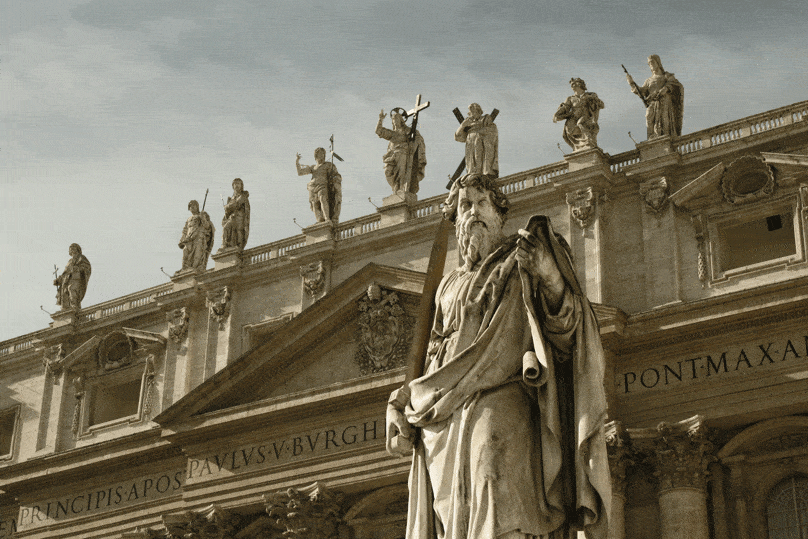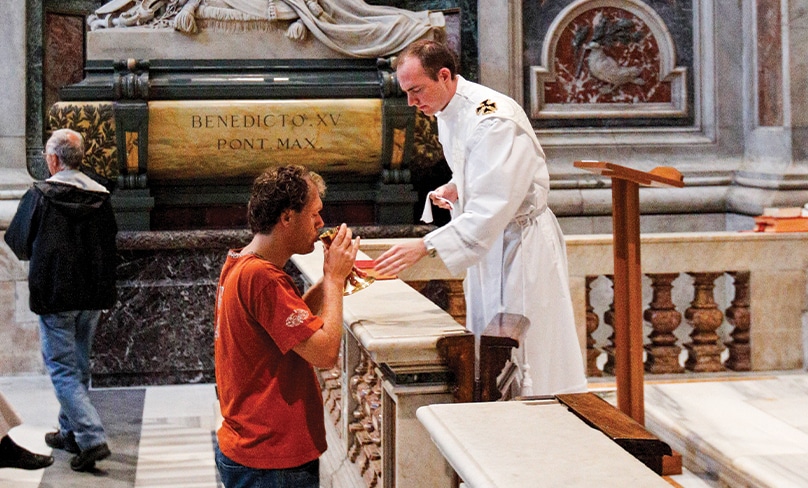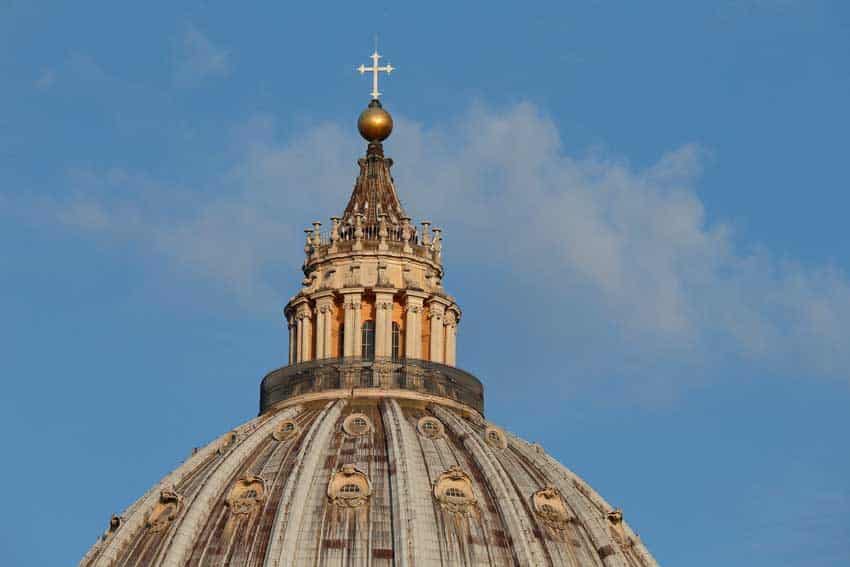
The meaning of having Mass at St Peter’s Basilica
You know those occasions that, while they are happening, you know you will remember for the rest of your life? Those moments that you just wish you could freeze time, because it is just so perfect?
In February 2016, I made a Year of Mercy pilgrimage to Rome with a friend of mine from the United States.
We did the pilgrimage walk, entered St Peter’s Basilica via the Holy Doors, and spent just over a week enjoying the sights and the saints of the Eternal City.
There were many beautiful experiences on that pilgrimage, but one stands out in my memory.
“I remember walking from St Peter’s Basilica afterwards and telling the guys that my heart was full: that the Mass is something I would remember forever.”
Two of my closest friends from Sydney were also in Rome at the time. One was a seminarian, the other had been ordained a priest about six months earlier and was in Rome finishing his studies.
One morning, the three of us went to St Peter’s Basilica for a Mass at one of the side altars, celebrated by my priest friend and served by my seminarian friend.
The Mass wasn’t exclusive; anyone who was at the Basilica was obviously welcome to join, but it ended up just being the three of us. I was a congregation of one, and I think I cried throughout the entire Mass.
I remember walking from St Peter’s Basilica afterwards and telling the guys that my heart was full: that the Mass is something I would remember forever. It remains one of the highlights of my life.

That same experience could not happen today because, as of last week, Masses at the side altars of St Peter’s Basilica have been prohibited.
Priests are welcome to concelebrate one of the four daily Masses that occur at the Basilica’s main altars, each of them celebrated in Italian, and pilgrims are welcome to attend those Masses.
The only exception will be on the feast day or memorial of a saint whose relics are contained in one of the side altars: on that one calendar day each year, one of the ‘main’ Masses will be relocated to the relevant side altar.
It is still possible for pilgrimage groups to book the Basilica’s grottos for Masses, but these are not in the main Basilica, but underneath.
The prohibition on the ‘private’ Masses was explained as being put in place to ensure that the Masses that are celebrated in the Basilica “take place in a climate of recollection and liturgical decorum.”
“… the Mass at St Peter’s Basilica, celebrated by a dear friend, is one of the most moving experiences of my life.”
No explanation was given as to how the Masses at the side altars were disrupting this decorum, particularly given that many of them took place outside of ‘scheduled’ Mass times.
The Reasons for this decision to be reversed
I’m not going to wade into the politics of this decision, or even to suggest that there are politics at play. I just want to provide a handful of reasons why this decision makes me sad, and why I hope it will be reversed soon.
The first is the one I already mentioned: the Mass at St Peter’s Basilica, celebrated by a dear friend, is one of the most moving experiences of my life. I am so grateful to have had that opportunity, and I’m sad that others will not get to experience the same.
The second is similar: I imagine that celebrating a Mass inside St Peter’s Basilica is also a very moving experience for a priest.

It is the spiritual home for all Catholics, the tomb of St Peter, and it signifies both unity with the current Pope and a continuity with the faith and teaching of the first Pope; there is no place like it in the world.
Having priests only be able to concelebrate Masses there, and only Masses in Italian, means that a number of priests will never get to offer Mass on their own at Catholic HQ.
The third reason is that it detracts from the universality of the Church: instead of being in the Basilica while Masses are celebrated in a variety of languages, demonstrating the true “Catholic” nature of the Church, the only language in which Masses will be offered is Italian.
In Sacrosanctum Concilium, the Second Vatican Council recognised the “great advantage to the people” of Mass being celebrated in the vernacular. Indeed, it is the reason why so many places dispensed with Latin altogether.
“Assuming a steady stream of visitors and pilgrims throughout the day, most visitors and pilgrims to the Basilica will never see a Mass celebrated there. How sad.”
If that remains true of Latin, then it is not entirely clear to me why it is not similarly true for Italian.
The fourth reason is that it treats the Basilica more like another Vatican museum than a Church. The Basilica is open most days for 12 hours, but only four Masses are celebrated during that time.
Assuming a steady stream of visitors and pilgrims throughout the day, most visitors and pilgrims to the Basilica will never see a Mass celebrated there. How sad.
And finally, it means the side altars will no longer be used for the purpose for which they were constructed: to have the Holy Sacrifice of the Mass celebrated on them. They will be relegated to an ornamental, rather than a sacramental, use.
And at a time when almost no one holds anything as sacred, we should be leading by example and reaffirming the sacredness of our holy sites, all of them.
